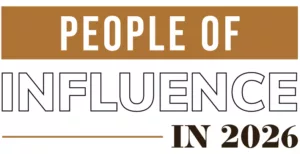Study finds antibody boosts breast cancer survival rates
Herceptin worked best when used concurrently with chemo, results show
Using the antibody Herceptin with chemotherapy, instead of after, improves treatment of women with HER2+ breast cancer, and should be the new standard of care, says a Mayo Clinic researcher who led what is regarded to be a key clinical trial determining the best use of Herceptin.
Patients using Herceptin and chemotherapy at the same time had a relative 25 percent reduction in the risk of recurrence of cancer or death, compared with women who used Herceptin after chemotherapy, says Dr. Edith Perez, who chairs the North Central Cancer Treatment Group (NCCTG) Breast Committee and is a breast cancer researcher at the Mayo Clinic campus in Jacksonville, Fla. She presented the findings last year at a breast cancer symposium in San Antonio.
Perez says the study findings potentially could have global implications for women being treated for HER2+ breast cancer, which makes up 20 percent to 25 percent of all cases.
In the U.S., for example, Herceptin is approved for use on either a sequential or concurrent treatment schedule with adjuvant chemotherapy, meaning chemotherapy following surgery. In much of the rest of the world, Herceptin is used sequentially, she says.
"The results of this trial have been eagerly awaited in the U.S. and in many nations as this is the only trial developed to define the optimal way to incorporate Herceptin in the context of adjuvant chemotherapy," Perez asserts. "The goal was to decrease the risk of cancer recurrence, and we have shown that concurrent use is the best way to achieve that."
"This could mean that up to 10,000 women around the world each year may have a better outcome if Herceptin is used along with chemotherapy. Given that, I believe this study will lead to a global re-evaluation of how Herceptin is used," she says.
Every year, approximately 250,000 women worldwide are eligible to be treated with Herceptin for invasive HER2+ breast cancer, Perez says.
Some data on part of the study have been released before, but this is the first time there has been mature outcome information on patients given sequential versus concurrent treatment. The trial enrolled women who had surgery to treat Stage I-III invasive HER2+ breast cancer.
The study is the only such randomized clinical trial to assess chemotherapy alone versus either sequential or concurrent use of Herceptin in patients. Chemotherapy used in the study was doxorubicin and cyclophosphamide then paclitaxel, and was administered for approximately six months. Herceptin was given for 52 weeks.
One comparison looked at outcomes in women who had chemotherapy alone compared with women who were treated with chemotherapy and then Herceptin, and found that their five-year disease-free survival rates—defined as no cancer recurrence—were 72 percent and 80 percent, respectively. Researchers found in a second comparison, though, that women who used Herceptin at the same time they were receiving chemotherapy fared the best overall, with a five-year disease-free survival rate of 84 percent.
Related Articles

_c.webp?t=1763626051)

